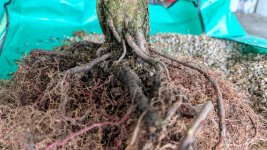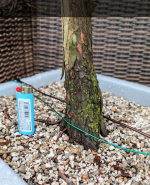Michigan Tree Murderer
Masterpiece
I repotted this Dawn redwood, and saw it has high roots on the base of the trunk with significant roots attached below the surface. I ended up leaving them alone, other than to spread them out radially. They look too high to be part of the base/nebari, and I wasn't sure how to handle them other than cut them off. Just seemed like more work than the tree could handle at this point.
How/when should I handle these high (pigtail) roots? Cut them, or leave them?
How/when should I handle these high (pigtail) roots? Cut them, or leave them?







